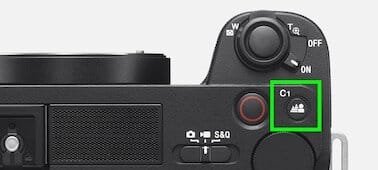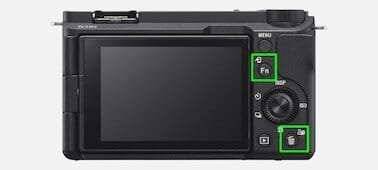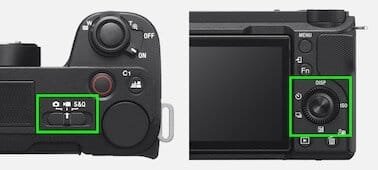
In today’s world of photography and videography, choosing the right device can make all the difference. Smartphone manufacturers often claim their cameras deliver DSLR-like quality, but how true is this statement? To answer this question, we’ve compared two leading devices: the Sony Alpha ZV-E10 II, a dedicated mirrorless camera, and the Apple iPhone 16 Pro Max, a flagship smartphone known for its exceptional camera system. Let’s dive into the details to see which one reigns supreme.
Verdict: Can a Smartphone Compete with a Dedicated Camera?
The short answer is no, but there’s more to it. While the iPhone 16 Pro Max excels in flexibility, portability, and ease of use, the Sony Alpha ZV-E10 II delivers unmatched image quality and professional-grade features. If you’re looking for the highest possible quality, especially for semi-professional or professional work, the Sony Alpha ZV-E10 II is the clear winner. However, if convenience and versatility are your priorities, the iPhone 16 Pro Max is an excellent choice.
Table of Contents
C1 (Custom 1) and Background Defocus

The C1 (Custom 1) button can be assigned to a frequently used function for fast one touch access during shooting or playback. It is pre-set out of the box to Background Defocus, allowing you to easily and instantly increase the amount of background blur to emphasize a main subject. Press again to turn Bokeh off for clear, deep-focus shots when shooting cityscapes or scenery.
Product Showcase28, custom functions buttons and easy transfers

The ZV-E10 II is designed for easy vlogging, with customisable buttons pre-set to functions like the Product Showcase mode. With this function activated, simply hold a product in front of the lens and the camera will smoothly switch focus to the product and back to your face when the product is moved away. Other frequently used functions can be assigned to the Fn (Function) menu for one-touch recall when needed. And once you’ve captured your footage, the Smartphone Transfer button in the playback mode enables fast, wireless, transfer of images to your smartphone and on to your favorite social networks with just a couple of quick taps
Fast-access switches and controls

A convenient Stills/Movie/S and Q switch allows fast selection of the corresponding modes, while an ergonomic control dial can be used to adjust a range of camera parameters, such as shutter speed or aperture. The dial can also be used alongside the standard navigation buttons for quick selection inside the Fn and settings menus.
Key Specifications: Sony Alpha ZV-E10 II vs. Apple iPhone 16 Pro Max
| Feature | Sony Alpha ZV-E10 II | Apple iPhone 16 Pro Max |
|---|---|---|
| Resolution | 26 MPix | 48 MPix |
| Sensor Size | APS-C (23.3 x 15.5 mm) | 1/1.14 inches |
| ISO Range (Photo) | Up to 102,400 | Up to 12,800 |
| ISO Range (Video) | Up to 32,000 | Up to 6,400 |
| Image Stabilization | Electronic | Mechanical and Electronic (IP68-rated) |
| Weight | 292 g (body only), 495 g (with lens) | 227 g |
| Connections | USB-C 3.2 (Gen 1), Micro HDMI | USB-C 3.2 (Gen 2) |

Case and Operation: Portability vs. Professionalism
Sony Alpha ZV-E10 II
- Design: Compact and lightweight, the ZV-E10 II is surprisingly portable for a mirrorless camera. Its larger grip, thanks to the NP-FZ100 battery, ensures a comfortable hold.
- Controls: The shutter release button is easy to access, and the zoom ring adds convenience. However, the lack of weatherproofing is a drawback, making it unsuitable for outdoor shooting in adverse conditions.
- Viewfinder: The touchscreen display is functional but struggles in bright sunlight unless set to “Sunny” mode.
Apple iPhone 16 Pro Max
- Design: Sleek, slim, and lighter than the Sony camera with its lens attached. The iPhone is also IP68-rated, making it dustproof and waterproof.
- Controls: Features a dedicated camera button, though it feels stiff. The touchscreen interface is intuitive and responsive, offering a superior user experience.
- Viewfinder: The iPhone’s larger, brighter display provides better visibility and precision, even in direct sunlight.
Photography Performance: Daylight, Low-Light, and Specific Situations
Panorama in Daylight: Detail and Dynamic Range
The Sony Alpha ZV-E10 II shines in daylight photography. With its APS-C sensor and higher resolution, it captures more detail and offers superior dynamic range compared to the iPhone. For instance:
- Castle Towers and Grass: The Sony camera captured intricate details in the castle towers and tall grass, while the iPhone’s images appeared slightly less sharp.
- Focal Length: Both devices used equivalent focal lengths (24mm), but Sony’s larger sensor provided a noticeable advantage.
More Specific Situations: Software Power vs. Manual Control
In challenging lighting conditions, the iPhone’s software proves invaluable. It simplifies decision-making by automatically adjusting settings:
- Falling Water Motif: The iPhone froze the motion with a short exposure time, while the Sony prioritized low ISO values, resulting in smoother but potentially blurrier shots.
- Tree Trunk: The iPhone focused on the entire subject, but the Sony captured more light with longer exposure times, albeit with slight blurring.
Low-Light Performance: Sensor Size Matters
Low-light photography highlights the Sony’s strengths:
- Test Shot (1 Lux): The Sony produced less noisy and more detailed images, even when handheld. The iPhone relied on Night Mode, combining multiple exposures over 2 seconds, but still fell short in noise reduction and detail.
Video Comparison: Bit Rate vs. Versatility
Sony Alpha ZV-E10 II
- Records Ultra HD at up to 60fps and Full HD at higher frame rates.
- Offers superior color reproduction and dynamic range.
- Ideal for vloggers and content creators who prioritize video quality.
Apple iPhone 16 Pro Max
- Supports Ultra HD at 120fps, making it perfect for slow-motion videos.
- Brightens colors for enhanced dynamic range, though not as natural as the Sony’s output.
- Allows seamless post-production directly on the device.
Price and Availability
- Sony Alpha ZV-E10 II : Available on Amazon for $1,098 .
- Apple iPhone 16 Pro Max : Starts at $1,199 and can be purchased directly from Apple.
Final Thoughts: Which One Should You Choose?
Who Should Buy the Sony Alpha ZV-E10 II?
- Professional Photographers/Vloggers : If you need top-tier image and video quality, the Sony Alpha ZV-E10 II is unmatched.
- Enthusiasts : Ideal for those willing to invest time in learning manual controls and settings.
Who Should Buy the Apple iPhone 16 Pro Max?
- Casual Users : Perfect for everyday photography and social media sharing.
- On-the-Go Creators : Its portability, weather resistance, and powerful software make it a versatile tool.
Conclusion
While the Apple iPhone 16 Pro Max offers unparalleled convenience and flexibility, the Sony Alpha ZV-E10 II stands out as a powerhouse for professional-grade photography and videography. Your choice ultimately depends on your specific needs and budget. Whether you’re a content creator, photographer, or casual user, both devices have something unique to offer.
See Also: Phone Finder